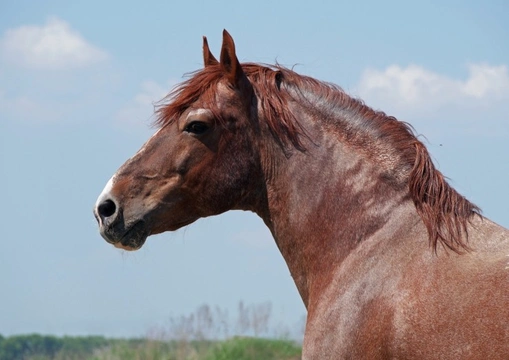
The Risks Involved When Horses Develop Cresty Necks
With the lusher grasses appearing many owners know that this is the time of the year when more care needs to be taken so horses and ponies don’t put on too much weight. Carrying too much puts them at greater risk of developing certain conditions and one of the early signs there may be a problem brewing is when they develop fatty deposits along their necks which is commonly known as having a “cresty neck”.
When horses or ponies develop cresty necks, it puts them more at risk of developing a very painful and debilitation disease called laminitis. It's a serious condition that typically affects both horses and ponies when they carry far too much weight or are considered as being obese. A horse's neck starts to develop unsightly fatty bulges along it which are extremely hard to the touch. Ponies tend to be more susceptible, but any horse and in particular cross breeds are more predisposed to developing cresty necks because they tend to be “good doers”.
Good Doers at Greater Risk
The problem is that a “good doer” tends to have an insulin resistance something they boast for a good reason which is to survive harsher winters when they need to. However, this resistance is for horses and ponies that live out in the wild and not kept as domestic animals. This same “protection” becomes a real problem when horses and ponies are continually fed an incorrect diet which is often the case in modern horse management. Today's commercial feeds contain a little too much starch and sugar for the domestic horse although these levels are exactly what is needed on a dairy farm they can be extremely dangerous for the “good doers” of the equine world.
However, any horse when fed more calories than they really need can start storing excess fat in their necks which turn into fat pads made up of adipose tissue. But it's not just on their necks that these fat deposits start developing, they can form on their tail pads, around their shoulders and other parts of the body which predisposes them to developing endocrinopathic laminitis, a disorder that is extremely hard to treat and one which is incredibly painful for a horse or pony to have to cope with.
What is a Cresty Neck?
In actual fact, a cresty neck is not just layer on layer of fat because ten different hormones are produced in these fatty tissues all of which are harmful. Adipose tissue is associated with inflammation due to the chemicals it produces and it is these chemicals that can so negatively impact a horse's health. This includes developing metabolic disorders which end up making their lives painfully miserable, one of which is called Equine Metabolic Syndrome (EMS).
Equine Metabolic Syndrome
EMS is not the same as Cushings Disease although it is sometimes called Peripheral Cushing's Disease. However, the underlying causes of EMS are quite different although research now points to the fact it could be a major factor in horses and ponies developing Cushing's Disease at a later date as they get older. Horses that develop EMS are insulin-resistant and as such are much more predisposed to laminitis, developing fat deposits on their crests and elsewhere on their bodies which are the damaging adipose tissue is all part of this harmful process.
EMS is usually first diagnosed when a horse or pony develops chronic recurrent laminitis with the most obvious clinical signs being the following:
- Abnormal fat deposits on their bellies
- Cresty necks very hard to the touch
- Fat deposits on their rumps
- Fat deposits in the sheath of geldings and stallions
The only way to test whether a horse may be suffering from EMS is to check their levels of glucose and insulin under specific conditions and to see whether or not they are elevated. Vets can also carry out a test which they use to diagnose Cushing's disease that also gives a good indication of whether a horse is suffering from EMS or not. However, the two conditions are very different therefore it's important that each one be correctly diagnosed before any sort of treatment can begin.
Horses and Ponies at Greater Risk
- Studies show that ponies standing at anything between 11 and 13 hands seem to be at greater risk of developing cresty necks
- Horses and ponies that previously suffered from laminitis appear to be at greater risk
- Native breeds which includes both cobs and ponies seem to be at greater risk
- The time of year can have a bearing because of the changes typically made in a feeding programme between summer and winter which are thought to put horses and ponies at greater risk
Conclusion
With the lusher spring and summer grasses comes a lot of headaches for many owners who own horses and ponies known to be “good doers”. The reason being they are more predisposed to developing cresty necks if their food intake is not closely monitored. Horses with fatty deposits along their necks and elsewhere on their bodies could be more at risk of developing laminitis, but they are also at greater risk of developing metabolic disorders too. Horses and ponies need to be fed the right amount of calories to suit not only their breed, but the amount of exercise they are given on a daily basis. If they are fed too much and/or are good doers, the excess fat will be stored as dangerous fatty deposits known as adipose tissue that form on their necks and elsewhere on their bodies. However, it is still not understood why some horses are more predisposed to developing cresty necks than others although it is thought to be connected to metabolic disorders.



